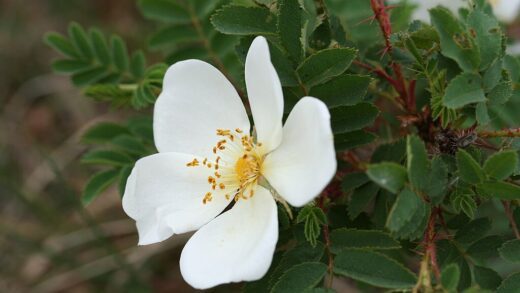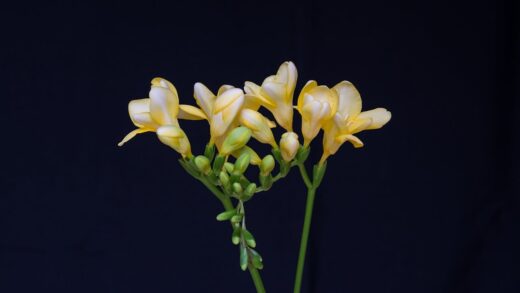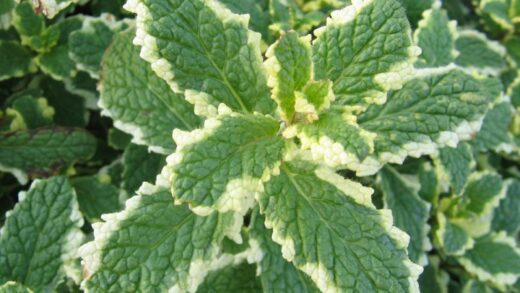Selecting the ideal time for planting
The success of cultivating the majestic madonna lily begins with a crucial decision: the timing of its planting. Unlike the vast majority of lily bulbs that are planted in the autumn or spring, the madonna lily has a very specific and much narrower window for optimal planting. This period is during its summer dormancy, typically from late August to early September. Planting during this time aligns perfectly with the bulb’s natural life cycle, allowing it to establish its roots in the warm soil before it begins to send up its characteristic rosette of basal leaves in the autumn. Adhering to this schedule is not merely a suggestion but a fundamental requirement for the plant’s long-term health and ability to thrive.
Planting the bulbs too late in the autumn can be highly problematic. If the ground has already begun to cool significantly, the bulb will not have sufficient time to develop a strong root system before winter sets in. This leaves the newly planted bulb vulnerable to frost heave and makes it less able to absorb the necessary moisture and nutrients to support the winter foliage. A poorly established bulb will almost certainly result in a weak plant and disappointing, if any, flowers in the following summer. The late summer window is therefore essential for giving the plant a proper head start.
Conversely, planting too early in the summer, before the bulb has entered full dormancy, can also cause issues. The bulbs you purchase should be dormant, firm, and ready for their rest period. Planting them while the soil is excessively hot and dry can cause stress and may even desiccate the bulb before it has a chance to sprout roots. The ideal moment is when the peak summer heat has just started to subside, but the soil remains warm enough to encourage rapid root development. This perfect balance is key to successful establishment.
By respecting the plant’s inherent rhythm and planting it during its late summer rest period, you are setting the stage for success. This timing ensures that the bulb awakens naturally as temperatures begin to cool, sending up its winter leaves at the appropriate time. This rosette of leaves will then have the entire autumn and winter to gather energy through photosynthesis, building up the reserves needed for the spectacular floral display to come. Getting the timing right from the very beginning is the most impactful step you can take towards growing healthy madonna lilies.
A step-by-step guide to planting bulbs
Planting madonna lily bulbs correctly involves a technique that is notably different from that of other lilies. The most critical rule to remember is that these bulbs require shallow planting. While most lily bulbs are planted at a depth two to three times their own height, the madonna lily bulb should be positioned so that the very top of the bulb is only covered by about one inch (or 2-3 centimeters) of soil. This shallow placement is vital because it allows the sun to warm the bulb during its summer dormancy, a condition that is essential for proper flower development.
More articles on this topic
Begin by preparing the chosen planting site, ensuring it receives full sun and has excellent drainage. Dig a hole that is wide enough to comfortably accommodate the bulb’s root system without bending or cramping them. The depth of the hole should be such that when you place the bulb inside, its tip is just below the soil surface. It is highly beneficial to add a layer of coarse sand or horticultural grit to the bottom of the planting hole. This creates a pocket of sharp drainage directly beneath the bulb, which is the most effective way to prevent basal rot.
Gently place the bulb on top of the sand layer, spreading out its basal roots carefully. The roots that come with the bulb are important for its initial establishment, so handle them with care and try not to break them. Once the bulb is in position, begin backfilling the hole with the amended, well-draining soil you have prepared. Firm the soil gently around the bulb to eliminate any large air pockets, ensuring good contact between the roots and the soil.
After backfilling, the final step is to water the area thoroughly. This initial watering helps to settle the soil around the bulb and its roots, providing the necessary moisture to stimulate new root growth. After this first watering, you should be patient and water only sparingly until you see the first signs of the autumn leaf rosette emerging. Overwatering a newly planted dormant bulb is a common mistake that can quickly lead to rot, so it is always better to err on the side of caution and keep the soil just barely moist.
Propagation through bulb division
One of the most reliable and straightforward methods for propagating madonna lilies is through the division of established clumps. Over several years, a single bulb will produce offsets, or smaller daughter bulbs, around its base, gradually forming a dense cluster. While this looks impressive, overcrowding can eventually lead to reduced flowering and increased competition for resources. Dividing these clumps every three to four years not only provides you with new plants but also reinvigorates the original planting, ensuring continued health and vigor.
More articles on this topic
The timing for division is exactly the same as for planting new bulbs: during the plant’s summer dormancy period in late August or early September. This is when the foliage has completely died back, and the bulbs are resting. Carefully lift the entire clump from the ground using a garden fork, inserting it well away from the bulbs to avoid accidentally spearing them. Once the clump is out of the ground, gently shake off the excess soil so you can clearly see the individual bulbs and how they are connected.
The next step is to carefully separate the bulbs from the main cluster. Often, the smaller offsets will break away easily with a gentle twist. For larger bulbs that are more firmly attached, you may need to use a clean, sharp knife to cut them apart, ensuring that each division has a healthy set of roots attached to its base. Discard any bulbs that show signs of disease, damage, or softness. This is also an excellent opportunity to inspect the health of your stock.
Once separated, the newly divided bulbs are ready for immediate replanting. Treat them just as you would new bulbs, planting them in a well-prepared site at the correct shallow depth, with their tops just one inch below the soil surface. Replant the parent bulbs as well, giving all of them adequate spacing of at least 12 inches (30 cm) to allow for future growth. Water them in well after planting and care for them as you would any newly planted madonna lily, anticipating the emergence of their autumn leaves as a sign of successful propagation.
The technique of bulb scaling
For gardeners looking to produce a much larger number of new plants from a single bulb, the technique of scaling is an incredibly effective, though more advanced, method of propagation. This process involves detaching individual scales from a healthy parent bulb and inducing them to form small new bulblets at their base. While it requires more patience and care than division, scaling can yield dozens of new plants from just one bulb, making it a very efficient way to increase your stock of these prized lilies.
Just as with division, the best time to take scales is during the summer dormancy period. After carefully lifting a healthy, mature bulb from the ground, clean off the soil and select the largest, firmest scales from the outside of the bulb. To remove a scale, hold the bulb firmly and gently snap the scale downwards and away from the base plate; it should detach with a small piece of the basal plate still attached, which is crucial as this is where the new growth will originate. You can safely remove up to a third of the scales from a large bulb without harming its ability to grow and flower the following year.
After harvesting the scales, it is a wise precaution to treat them with a fungicide to prevent rot. Place the scales in a plastic bag containing a small amount of fungicide powder and shake it gently to coat them lightly. The next step is to place the dusted scales into a sealable plastic bag filled with a slightly damp medium like perlite, vermiculite, or a mix of peat and sand. The medium should be barely moist to the touch; too much moisture will cause the scales to rot.
Seal the bag and place it in a warm, dark place, such as an airing cupboard or near a water heater, with a consistent temperature of around 21°C (70°F). After six to eight weeks, you should see tiny bulblets beginning to form at the base of each scale. Once these bulblets have developed their own small roots, they can be carefully detached and planted in a nursery pot or a protected seed tray to grow on. They will require another year or two of growth before they are large enough to be planted out in the garden and eventually flower.
Caring for newly propagated plants
The care you provide to newly propagated madonna lilies, whether they come from division or scaling, is crucial for their successful development into mature, flowering plants. For bulbs created through division, the care is relatively straightforward. Once replanted in their new positions, they should be treated much like newly purchased bulbs. Provide an initial thorough watering to settle the soil, and then monitor them for the emergence of the autumn leaf rosette. Ensure they are kept free from competing weeds and are protected from pests like slugs, which are particularly fond of tender new leaves.
Young plants grown from scales require a more delicate and patient approach. After the tiny bulblets have been potted up, they should be grown in a protected environment, such as a cold frame or a sheltered nursery bed, for at least their first year. The goal is to encourage strong leaf and root growth. They require a well-draining potting mix and should be kept consistently moist but never waterlogged. A weak, balanced liquid fertilizer can be applied every few weeks during their active growing season in spring to support their development.
Protecting these young, vulnerable plants from the harshness of winter is essential. Potted bulblets should be moved to a location where they are shielded from excessive rain and severe frosts, such as against the wall of a house or in a cold frame. A light mulch of fine grit can help protect the tiny bulbs from being pushed out of the soil by frost heave. It is important that they still receive light, as they will likely produce a small leaf or two to photosynthesize.
It will typically take two to three years for a bulblet grown from a scale to reach a size sufficient for flowering. During this time, your role is to provide a stable and nurturing environment. As the bulbs grow larger each year, they can be repotted into slightly larger containers or given more space in the nursery bed. Once a bulb has reached a healthy size, roughly the size of a small walnut, it can be transplanted to its final position in the garden during the late summer dormancy period, ready to begin its life as a mature, flowering plant.


















